TRADITIONS OF CAMPECHE
Traditions in CAMPECHE
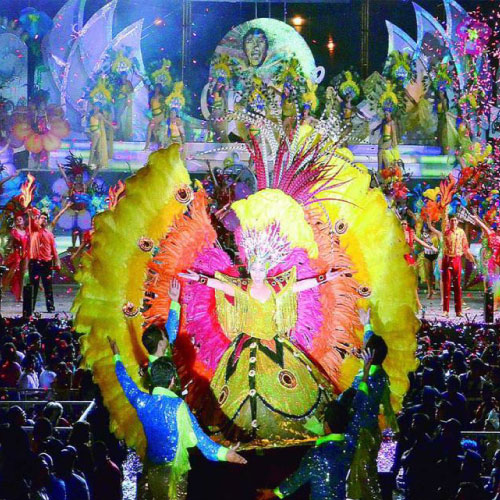
Campeche is a State of Mexico and is without a doubt one of the most beautiful and traditional States of this country. Campeche is located in the southeast of Mexico and borders the states of Yucatan to the north, the state of Quintana Roo to the east, and the countries of Guatemala and Belize to the south.
The capital of this State is called San Francisco de Campeche and it is also the city with the largest population in Campeche. It is one of the most traditional States , while many would think that Campeche is similar to the rest of Mexico, with the traditional vendors of snacks in the streets and with a rhythm of life similar to that of other cities in Mexico, the truth is that Campeche has a lot of culture and family traditions, which make to this State in a very original place.
Campeche is characterized by its unique way of preserving and celebrating its popular and religious festivals. In each municipality, the patron saint of each town or region is celebrated in a similar way.
Festivities in CAMPECHE
Polkeken Festivities
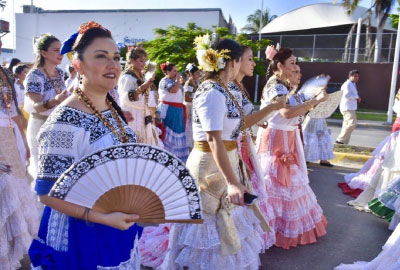
As its name indicates, it is the Fiesta de la Cabeza de Cochino. Polkeken comes from the Mayan words Pol which means head and Kekén which means pig. Traditional celebration in which women wear traditional costumes from this region of Mexico, to dance the Danza de Gallo y Cochino. The event is celebrated in January in the city of Lerma, it represents a gratitude to nature, which was considered the origin and foundation of life; as well as provider of their satisfiers.
In La Danza de Gallo, a dancer holds a pig’s head with colored ribbons on his head. For the Mayans, it was a magical cycle in which they tried to maintain a balance to avoid lightning, droughts, heavy rains; as well as everything they feared and could not control
It is celebrated from 1907 within the celebration of the Feast of the Three Kings. It marks an epilogue and the final goal of said celebration, where various groups made up of seven or eight families make novenas honoring the memory of the Three Wise Men asking for a good harvest and fishing, traditional activities of this Campeche community.
During the first six days of January, the Kings have novenas; On January 6 or 7, a group goes out to visit the others and together make a tour of the community with jarana music and end the party with a banquet where the main stew is the pig, several animal heads are offered to the foot of the altars, hence the name of Polkekén.
Festival of the Historic Center of Campeche
In December 1999, coinciding with the title of World Heritage, the Christmas Concert was held for the first time and various cultural and artistic dissemination strategies were established. This festival is expected year after year for the excellent quality of the events that are presented.
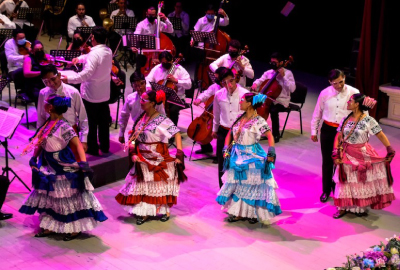
Over the years, this festival has established itself as the highest exponent of the arts in the entity and a creative and plural scene of cultural dissemination from various parts of the world where different artistic proposals converge, such as dance, music, visual arts and theater; and musicals, from jazz, classical music to the typical music of the region such as jarana and trova campechana.
The atrium of the Cathedral has become a spectacular forum that brings together thousands of people each year at the concerts offered there. At the same time, the Jazz Festival is held with an attractive program and the participation of renowned exponents of the genre. A whole visual and sound experience that opens the imagination represents what is already a tradition in the city of Campeche.
Other cultural festivals that take place in the state are the Theater and the Cervantino, as Campeche has been for several years an important venue and extension of the largest cultural celebration in the country.
Festivities of the Black Christ of San Román
Celebration surrounded by a halo of divinity originated according to popular belief in a miracle that occurred on September 14, 1565, when an ebony image -which according to legend was carved in Italy- arrived in the middle of a storm in less than 24 hours of Alvarado, Veracruz to Campeche, even when around him other ships were shipwrecked.
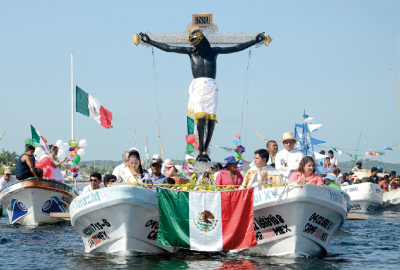
Since then, the memory of Juan Cano de Coca Gaytán, a successful merchant whose ship navigated the stormy waters, and his most famous crew member, the Black Christ, have been engraved in the memory of the people of Campeche, and therefore, since that distant September 14 since 1565 there have been acts in his honor that have become the fair that we enjoy today.
It is celebrated from September 13 to 29, Christ is lowered from his altar to approach the parishioners, who kiss his feet to get the blessing of the slender figure. Pilgrimages through the streets of the neighborhood fill the population with joy while, in the surroundings, the mechanical games fill with fun in this deep-rooted tradition of the city of San Francisco de Campeche.
The religious fervor is accompanied by cultural and artistic activities, and various exhibitions. Serenades, floral game contests, agricultural, livestock, craft and industrial exhibitions, the coronation of the queen of the fair, the mechanical games, they illuminate with their neon lights the places near the sea on the boardwalk, the stalls to win diverse artisanal objects are visited, as well as the traditional regional “vaquería” of great convocation.
Festival of the San Francisco neighborhood
Part of the traditions of Campeche are religious, as is the case of the San Francisco fair. This festivity is one of the main ones in the city, since it is in honor of San Francisco de Asís, patron saint of the capital.
This is one of the traditions of Campeche that began with the arrival of the Black Christ in the city in 1565. The Black Christ is located in the San Román neighborhood of San Francisco de Campeche. A tradition celebrated in September, specifically from the 13th to the 29th that brings together a large number of parishioners.
It takes place at the beginning of October, and what can be seen that day are cultural events, serenades, floral game contests, agricultural, livestock, craft and industrial exhibitions, as well as mechanical games, processions and popular dances.; processions and liturgical services.
Campeche Carnival
It is celebrated between the months of February and March but it does not have a defined date, being influenced by the climate and the organization of the premises. The Campeche carnival has been held for more than 450 years, making it the oldest in Mexico.
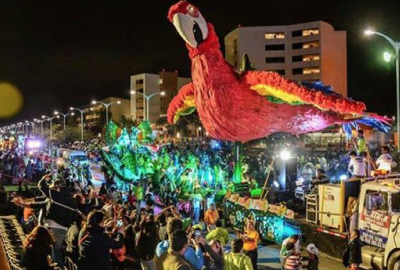
It begins with “The funeral ride and burial of bad humor.” The bad mood is represented with a rag doll with pirate features, which is paraded through the streets of the city inside a coffin and is burned to give way to joy. Coronations of kings and queens of the various neighborhoods, neighborhoods, clubs, schools and private companies are held, with comparsa dances and shows by musical groups.
Various parades are also held, such as: parade of allegorical cars, the rooster of queens and ambassadors, the walk of flowers, the children’s parade, the naval round and the traditional “bando”. The carnival concludes the day before Ash Wednesday with “La quema de Juan Carnaval”, a rag doll that represents the carnival, which is also burned while “his widows cry” for him.
This day, the Campeche boardwalk is filled with vibrant colors with the clothing of the participants and a lot of hubbub. During this day, attendees also enjoy mechanical games, traditional food and many more attractions.
“Pintadera” Tuesday
La Pintadera is one of the most interesting and fun traditions during carnival week, precisely on Tuesday. It consists of throwing water or paint balloons among all the participants among the people who wish to participate, although they also include the runners of the popular races.
Although it is true that it is a tradition that is being lost, there are several groups that fight to maintain this ancient tradition. The few that still do, allow quite an amusing spectacle to be seen. It is considered one of the traditions of Campeche, since it is related to the carnival, we hope that at least you get to see it sometime.
Peninsular “Vaquería”
Of deep tradition it was celebrated on the occasion of branding the cattle of the haciendas- hence its name, vaquería (cow farm), amalgamation of religious worship and Spanish folklore mixed with the beliefs of the Mayan people. The name of vaquería in Mayan is U-Chanil-In-Kahal or Fiesta del Pueblo, because the women were called cowgirls when wearing cowboy-style hats.
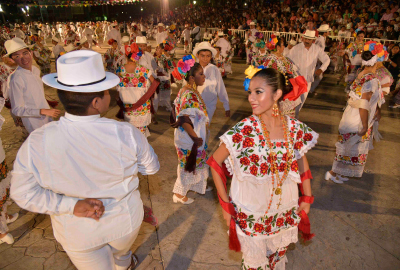
An important part of this dance is dancing with the head of a pig, which gives way to hours of dance in which the woman acts as the protagonist of the celebration at a rhythm of six by eight and three by four offered by the sonideras peninsular charangas. It is reminiscent of an offering, a thanksgiving that the Mayans used to perform since pre-Hispanic times, after a hunt, sharing the pieces (Tos Pool) of the hunted animal among the participants, and when he gave himself up there was dancing revelry.
That is why, starting in the year 2000, as a means to spread the symbolic universe of the community, in the recently named World Heritage City, it was proposed to celebrate a “vaquería” in the main park. Such a proposal was intended to demonstrate a living tradition with a broad popular spectrum, a connection platform between the authorities and the citizenry, promoting and preserving the cultivation of a popular practice.
The “vaquería” is celebrated within a religious framework in each rural community, which is why it was decided to insert it into the festivities of the Black Christ of San Román, receiving wide acceptance to this day that is celebrated in the Parque de la República.
This is how “La Vaquería” is part of the regional culture and is a sign of the Mayan-colonial influence, which concentrates an expression of the Campeche miscegenation, a historical tradition that remains alive and shows a future of permanence thanks to the practice in typical festivities.
Candelaria Festival
La Candelaria is one of the most popular and traditional festivals in Campeche. It is celebrated on February 2 with dances, fireworks, mechanical games, processions and religious dawns. You can especially visit the celebrations in Champotón, Candelaria, Hool and Campeche. In the municipality of Candelaria, the town celebrates the festivity with a fair in which they sing “Las mañanitas” and at night they dress the sky with fireworks.
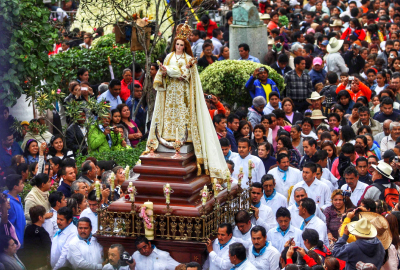
Although the festival of Día de la Candelaria is celebrated in this way in Campeche, we must not forget that February 2 marks the beginning of the year in various parts of the ancient world, the end of the snowy season and the awakening of the Mother Nature. On the other hand, the Church instituted it as the Day of the Purification of Mary, on which it falls precisely forty days after Christmas.
Located just 40 minutes from the capital city, Hool, municipality of Champotón, is a small community of just 3,500 inhabitants that brings together more than 10,000 people for the Candelaria celebrations, including families from various municipalities. and from neighboring entities that settle in camps for up to a week. At Hool, children receive a mud cross on their foreheads for them to attend each year.
At the top of a hill, with blue and white walls and red painted doors, you can see the Church of Hool, where an image of the Virgen de la Candelaria is carried on the shoulders. The ringing of the bells located at the top of the church of the Immaculate Conception announces the arrival of the procession that is a mixture of customs and traditions on a special date.
La Virgen del Carmen
In all the places that carry Del Carmen in their name, they have a wonderful story that tells why this virgin is their patron saint and protector, for example, Ciudad del Carmen, in Campeche. It takes place from July 15 to 30, in Ciudad del Carmen, within the island, and brings together hundreds of parishioners in religious events, walks of the sacred image through the lagoon, as well as parties and mechanical games, as well as events livestock, cultural and sports activities.
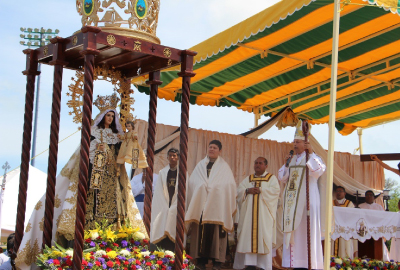
The origin of this celebration lies in the recovery of Terminos Island, which had been taken by English pirates who extracted dyewood and precious wood from here, a fact that occurred on July 16, 1718. Flagged by the blessing of the image of The Virgen del Carmen achieved a successful battle and from then on gave the island its name and is celebrated with great devotion. In gratitude for her, it was named Ciudad del Carmen and a chapel was built in her honor inside its fort.
In 1900, as a sign of gratitude and love, the fishermen of Ciudad del Carmen gave the Virgin a golden crown; On July 16, 1956, the centenary of the city was celebrated, and the residents gave the Virgen del Carmen a new crown, more beautiful and with the coat of arms of the city, and paraded it throughout the bay aboard a shrimp boat called “Centenario del Carmen”.
This walk was repeated in 1968 and the following year oil wells were discovered in the same area, in this way the people considered that it was a blessing from the Virgin, almost a miracle, since then every year without exception he is paraded around the bay.
Day of the Dead in Campeche
The Feast of All Saints, is celebrated every year in Campeche, from October 31 to November 2, which is the day of the faithful departed, it is believed that the souls visit the house they once inhabited. This tradition includes religious ceremonies, special offerings and visits to cemeteries, as well as altars with flower arrangements in the houses of the people of Campeche.
In the city of Campeche as well as in rural areas and municipalities of Mayan origin, it is common to find an altar to the dead in each home dwelling, attractive to the eye, not only for the food but for the various flowers that give off their characteristic odor. mixed with those of banquet so profuse, as well as the sweet and attractive fragrance of incense.
Traditional drinks and foods of this state are also offered at the altars and consumed by all. The food is just the climax of a preparation made in advance, a tradition that takes on a ritual aspect, where a whole family cleans their house, prepares tablecloths, recalls the personality of the deceased and offers their favorite delicacies.
It is precisely in the historic center of San Francisco de Campeche that on the 31st the Altars of the Dead Contest was held with the participation of schools and businesses, which constitutes an educational outing for children who learn about their roots and traditions, and for foreign tourists a spectacle of colors and flavors of enormous fascination.
Hanal Pixán
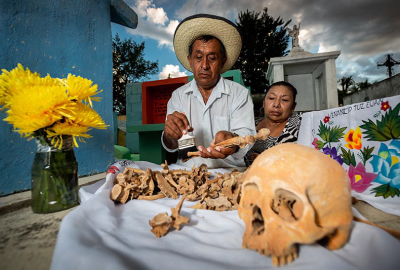
The first of November celebrates the feast of All Saints, however, due to the outstanding syncretism, in this region it has been merged with the Hanal Pixán or “food of the souls” of the Mayan worldview. This festival acquires a magical symbolism of enormous appeal, both for locals and for strangers.
This is one of the most anticipated and respected festivals by the inhabitants of Campeche where families participate in the different activities for the offering, which in rural areas is mixed with the best of what is obtained in the harvest.
It begins on October 31 with the arrival of the souls of the children or Chichán Pixán, to whom the first altar containing sweets and some toys is dedicated. November 1 is dedicated to the deceased adults or Nohoch Pixán, to whom their favorite foods and habits such as cigarettes, their favorite soft drink, etc. are offered at the altar. All this accompanied by flowers and the images of the relatives and their candles to guide their course. And finally on November 2 the altar is dedicated to all souls, those who have no one to remember them.
Pomuch and the cleaning of the Holy Remains
The community of Pomuch, municipality of Hecelchakán to the north of the capital, observes very particular traditions for the dates of Hanal Pixán. Some days prior to the arrival of their deceased, their relatives attend the cemetery to dust off and wash the skeletal remains of their deceased, which are deposited in small boxes inside ossuaries to which the embroidered mantle that surrounds them is also changed, representing the change of clothes.
This tradition known in the Mayan language as Kesh Lu Noc or Chuch Ba’ac represents the physical perseverance of the ancestors and the affection professed by their relatives where death does not represent a total absence, but rather the transition to a different plane.
Although tradition says that the souls will remain until the eighth day or Bix, the altars and many elements of the offering will remain until the last day of November, when the month of the dead ends.
Calendar of festivities in CAMPECHE
Becal
May 20th. Jipi Fair.
Calkiní
15 th of May. Fair and patron saint festival of San Isidro Labrador.
October 5th. Festivity of the Christ of Mercy: processions, Dance of the Pig’s Head, music and fireworks.
Campeche
June 24. Feast of San Juan. Boat ride along the boardwalk with the image of the saint.
September 14. Fiesta de San Román: great fair, procession with the Christ of San Román, dances and fireworks.
Candelaria
February 2. fair, dances, processions and fireworks.
Carnival Festivities
The most important are those celebrated in Calkiní, Campeche, Ciudad del Carmen, Hecelchakán, Hopelchén and Tenabo.
Ciudad del Carmen
July 16th. Festivity of the Virgen del Carmen: dances, fair, processions and fireworks.
Hecelchakán
August 15th. Feast of the Assumption of the Virgin: dances and processions.
November 1 and 2. Day of the Dead: altars, offerings and visits to the cemetery; Farewell to the souls on October 31.
Hopelchén
May 3. Festival of the Holy Cross: Dance of the Pig’s Head.
Palizada
August 15. Fair of the population: music and dairy farms.
Tenabo
August 8 to 15. Festivity of the Virgen de la Asunción: processions, dances, fair and the “carrying of the candle” to the temple.
Handicrafts in CAMPECHE
Becal, Santa Cruz Hacienda, San Nicolás and Tankuché
Jipi crafts (a type of fiber). Manufacture of hats of this fiber and various objects for personal and ornamental use.
Nunkiní
Rugs and objects woven with vegetable fibers.
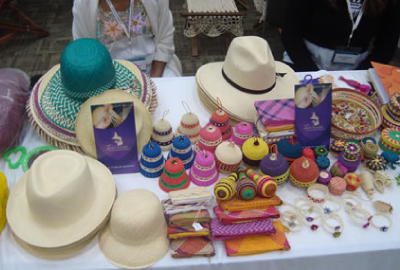
Champoton, Escárcega and Campeche
Ornamental wooden objects.
Santa Cruz Pueblo, San Antonio, Sahcabchen, Concepción, Pucnachen, Koben
Hammocks.
Champotón
Ornamental objects made from sea shells.
Campeche City
Ornamental objects made with bull horn.
Hopelchén
Hand embroidery.
Tenabo, Hecelchakán and Calkiní
Colorful machine embroidery and cross stitch. Huipiles, dresses and blouses.
Tepakán
Ceramics.
More Tourist Attractions in CAMPECHE
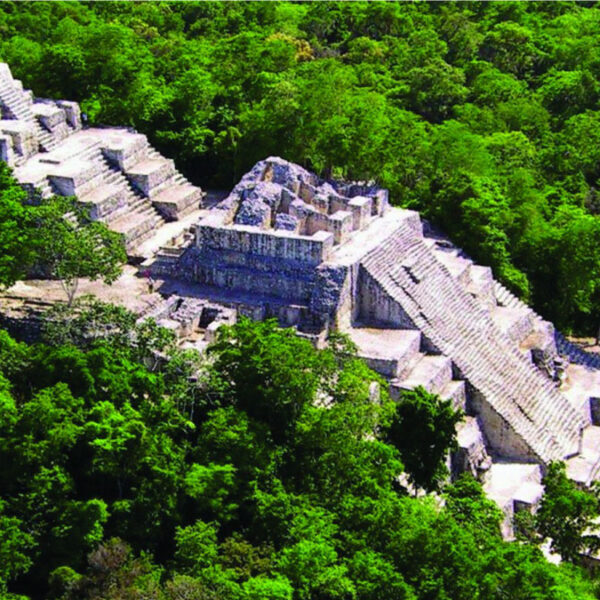
Archaelogical Sites in Campeche
The centers of the cities were filled with foundations for the temples, palaces, ball courts, astronomical observatories and rooms; like those seen in the Campeche Petén, the Puuc region, that of Los Chenes, that of Río Bec and that of the rivers and lagoons.… Read More
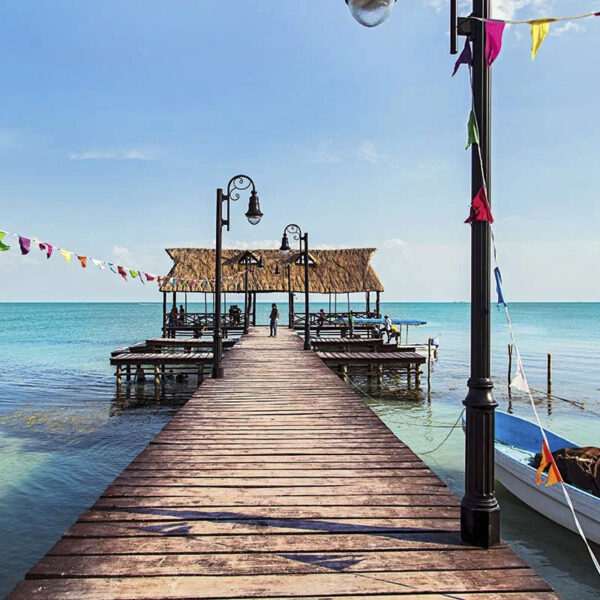
Campeche City Surroundings
Campeche is one of the states in the Mexican southeast that is worth visiting for its charming corners full of nature and cultural richness. Therefore, on this occasion, we present some of the most striking interesting sites in Campeche that will surely leave you speechless on your next trip. Take the best photos, fall in love with the best views, let yourself be surprised by its little towns full of history and learn more about the richness of this place.… Read More
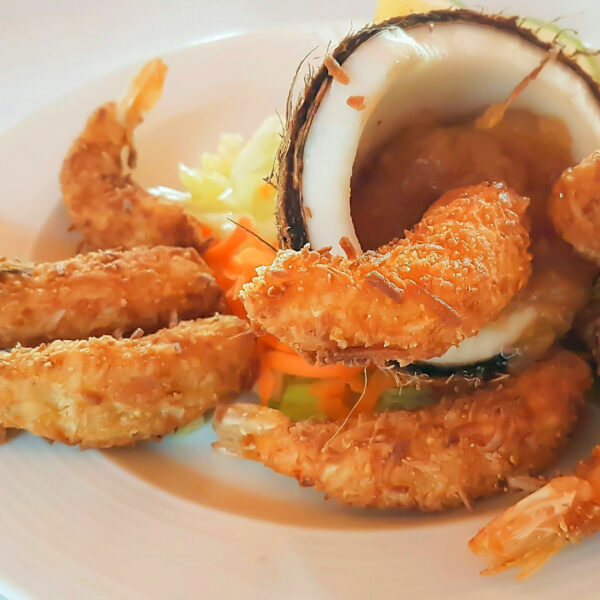
Gastronomy of Campeche
The state of Campeche is famous for its excellent gastronomy, unique and original for its creativity, seasoning and taste. Its gastronomic personality is the result of its Mayan heritage, combined with the contributions of the Spanish, and even pirates and corsairs also brought new components and forms of preparation in the various dishes that can be savored in the region today. Campeche has a wide variety of seafood, which has been fully used in its cuisine.… Read More
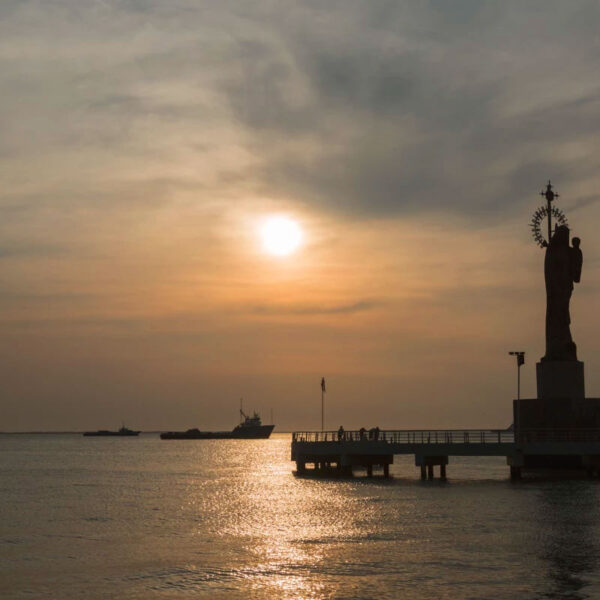
Ciudad del Carmen
It was founded during the pre-Hispanic period, and after the arrival of the Spaniards the island was populated mainly by pirates, it was known as
“Isla de Tris”. Cd. del Carmen has an extension of 6,353.3 square miles and is surrounded by beautiful landscapes with tropical vegetation. Also known as the Pearl of the Gulf, the island lies off the coast and is connected to the mainland by two bridges over the Laguna de Terminos, one of them with a length of more than two miles is the longest in Mexico. The natural attractions along with the archeological sites and the European style buildings in town, convert the island in a very apealing place for visitors.… Read More
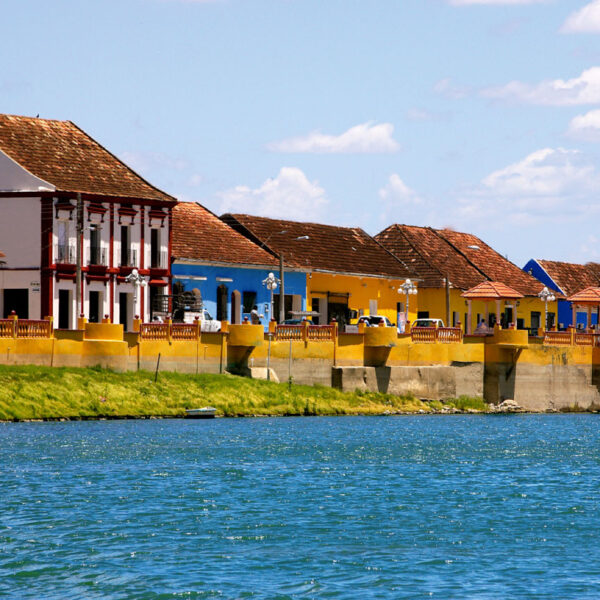
Magical Towns in Campeche
Among all the wonders of the state, there are also two of its magical towns: Isla Aguada and Palizada. Two ideal destinations to live under the colors of the sunsets, the beauty of its architecture and the legends of its streets.… Read More
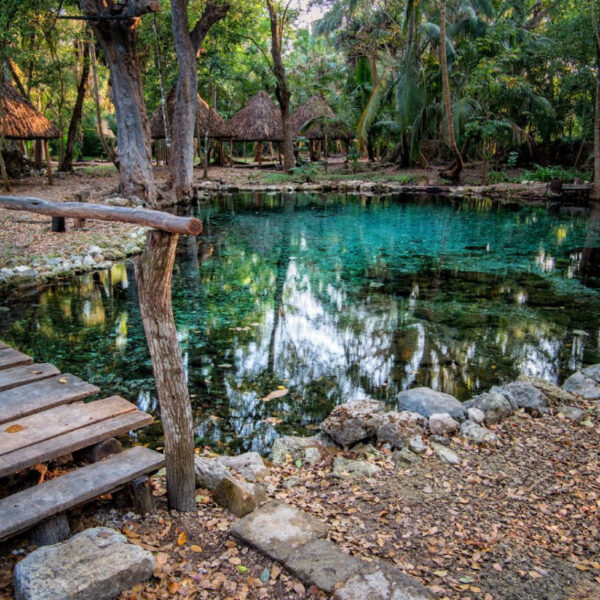
Ecotourism and Adventure in Campeche
Ecotourism in Campeche is lived between majestic jungles and mangroves, fill your vacations with unforgettable adventures! If you are looking to reconnect with nature and live it to the fullest, you will love ecotourism in Campeche. Get ready to go through jungles surrounded by tropical jungle and Mayan culture, mangroves and petenes surrounded by rich wildlife.… Read More
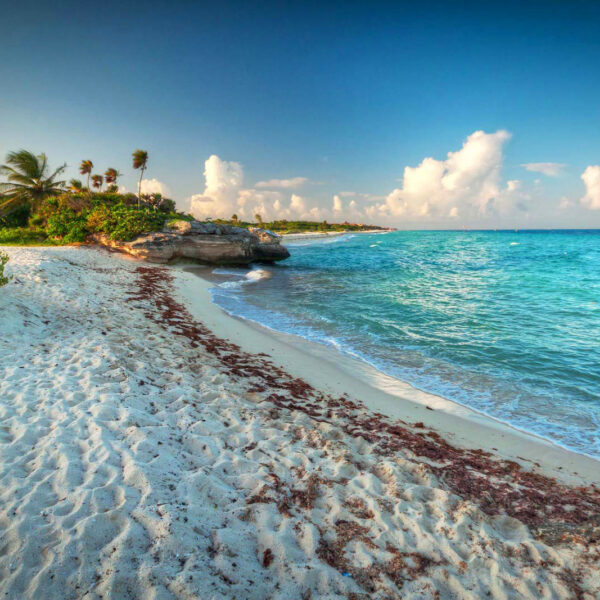
Beaches in Campeche
Thanks to the natural beauty that surrounds them, and the low presence of tourism, the state has some of the most beautiful beaches in Mexico. Its sand, which ranges from golden to white, and the tranquility of its sea, are oases away from the big cities and crowds, where you can relax and enjoy nature.… Read More
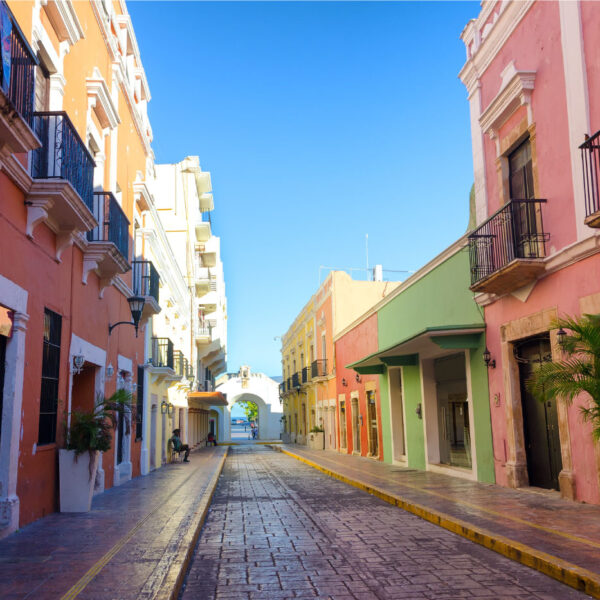
Campeche City
Campeche is a city immersed in the typically colonial atmosphere with towers, bastions and walls. The state of preservation and quality of its architecture earned it the status of a UNESCO World Heritage Site in 1999.… Read More
Flights & Hotels in CAMPECHE
More Tourist Attractions in MEXICO

Beaches
On the Beaches of Mexico you can immerse yourself in the intense blue ocean of the Pacific bays, sunbathe on the shore of the warm and transparent waves of the Caribbean Sea in Quintana Roo or even rest on the beautiful coasts of the Gulf of Mexico. Mexican beaches hide wonderful secrets for the traveler. By visiting them, in addition to enjoying the excellent climate and water activities, you can discover splendid archaeological sites and interesting colonial cities without traveling long distances.… Read More

Archaeological Sites
The Archaeological Zones are the cultural past of every Mexican. You will be amazed at the ambient, nature and the environment that surrounds them. Climbing to the top or being around it will take us back in time to admire every detail. México is a country of culture and traditions, many of which we have inherited from the pre-Hispanic inhabitants of this vast territory, although it is true that there were more settlements in the central and southern part of the country, it is also possible to find some archaeological remains in the north.
… Read More

Magical Towns
A Magical Town is a place with symbols and legends, towns with history that in many cases have been the scene of transcendent events for our country, they are places that show the national identity in each of its corners, with a magic that emanates from its attractions ; visiting them is an opportunity to discover the charm of Mexico. The Magical Towns Program contributes to revalue a set of populations in the country that have always been in the collective imagination of the nation and that represent fresh and varied alternatives for national and foreign visitors. A town that through time and in the face of modernity, has conserved, valued and defended its historical, cultural and natural heritage; and manifests it in various expressions through its tangible and intangible heritage. A Magical Town is a town that has unique, symbolic attributes, authentic stories, transcendent events, everyday life, which means a great opportunity for tourist use, taking into account the motivations and needs of travelers.… Read More

Gastronomy
The Gastronomy of Mexico has a great diversity of typical dishes, which is why it was recognized by UNESCO as Intangible Heritage of Humanity. The basic and representative ingredients of Mexican dishes are: corn, coriander, chili, beans, piloncillo, nopal and tomato. Mexican cuisine is also characterized by its sauces, which serve as an accompaniment to traditional dishes, prepared based on spices.… Read More

States Of Mexico
Mexico has an incredible diversity of landscapes, where the beauty of its beaches, internationally recognized, stands out. In its vast territory of coasts, there are beaches of unparalleled beauty, and colorful landscapes. A large network of first-class hotels and tourist services is available to visitors to these beaches. Mexico is also mystical places, dotted with archaeological testimonies inherited from its original inhabitants. Monuments made by the Mayas, Aztecs and Toltecs are located in magical landscapes, like lighthouses in an ocean of natural beauty. They offer visitors buildings that tell their history, and museums that collect their cultural heritage. And that keep alive ancestral traditions, in ceremonies and festivals, where you can enjoy cultural activities and entertainment.… Read More

Capital Cities
Folklore, gastronomy, literary culture, art and exhibitions, is what you will find in the capitals of the states of Mexico. To the north, colonial Mexico, Puebla, Guadalajara, Guanajuato, the Sonoran desert and the California peninsula. To the east Veracruz and the gulf. To the west Acapulco, Oaxaca and Tuxtla Gutiérrez. And to the south the Riviera Maya and the pyramids of Chichén-Itzá, Tulúm and Cobá in Yucatán, Palenque in Chiapas, the cenotes, and the Central American jungles.… Read More

Ecotourism and Adventure
Mexico is one of the best countries for Ecotourism as it has a great variety of flora and fauna, as well as a large number of refuges for extraordinary species. You can enjoy recreational activities of appreciation and knowledge of nature through contact with it, such as: stargazing, observation of natural attractions, wildlife and bird watching. Throughout México there are more than 176 protected natural areas, 5 of them considered by UNESCO as Natural Heritage of Humanity. Just for this and much more, we believe that Mexico is a Paradise for Ecotourism.… Read More

Traditions in Mexico
It is practically impossible to make a meticulous, and above all, accurate selection of the places to visit in Mexico. Each place that our country houses is unique and beautiful in its own way. Mexico, with its nearly 2 million km², has a large number of scenarios to offer, as well as endless activities to do. Do not lose your way and enter the places to visit in Mexico. In Mexico, apart from the beaches and its famous archaeological sites, there are many other really interesting sites and activities that you should know. In the surroundings of the main cities you will find places full of culture and tradition, where you can spend relaxing, interesting and fun vacations. On your trip through Mexico you cannot stop obtaining souvenirs, the crafts that are made here are of the highest quality and recognized worldwide. A shopping tour cannot be missed.… Read More

